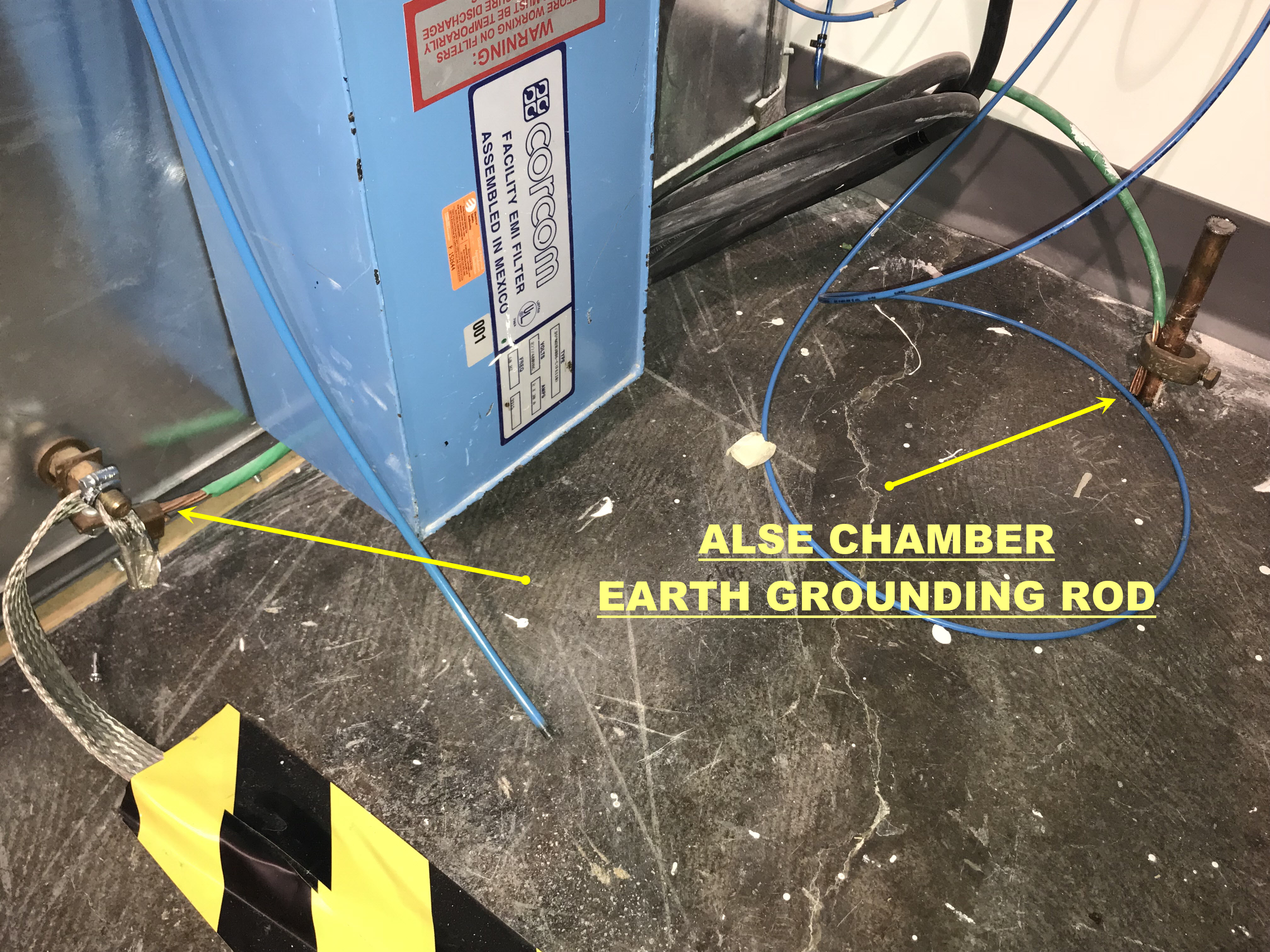CISPR-25 Generic Test Setup for compliance to CS.00054:2018
CS.00054 Radiated Emissions Block Diagram
The vertical monopole element is centered at 1m from the center of the 1.7m test harness. Note that 1.5m of the harness is running at 10 cm parallel with ground plane edge. The antenna counterpoise is placed +10/-20 mm vs GP.
CISPR-25 Generic DUT Setup. The DUT is placed @ 20 cm from the edge of GP. The 1.7 m Test Harness is routed 90 degrees towards DUT.
The ground plane is connected to chamber's floor to a dedicated Earth Grounding Rod.
LISN (700 V DC / 500 A) & Load Simulator side of the test setup.
DUT's B+ & GND lines are connected to LISN's outputs.
THE BICONICAL ANTENNA IN VERTICAL POLARIZATION.
The antenna is centered on the 1.5m harness running at 10 cm parallel with GP edge.
THE BICONICAL ANTENNA IN HORIZONTAL POLARIZATION.
The antenna is centered on the 1.5m harness running at 10 cm parallel with GP edge.
THE LOG PERIODIC ANTENNA IN VERTICAL POLARIZATION.
The tip of antenna is 1 m away from the center of the test harness.
THE LOG PERIODIC ANTENNA IN HORIZONTAL POLARIZATION.
The tip of antenna is 1 m away from the center of the test harness.
Octave Antenna Vertical Polarization with its aperture centered on DUT at 1 m distance from test harness.
Octave Antenna Horizontal Polarization with its aperture centered on DUT at 1 m distance from test harness.
Horn Antenna Horizontal Polarization with its aperture centered on DUT at 1 m distance from test harness.
Horn Antenna Vertical Polarization with its aperture centered on DUT at 1 m distance from test harness.
3-METER ALSE CHAMBER & Equipment Control Shielded Room.

ALSE CHAMBER EARTH GROUNDING ROD.